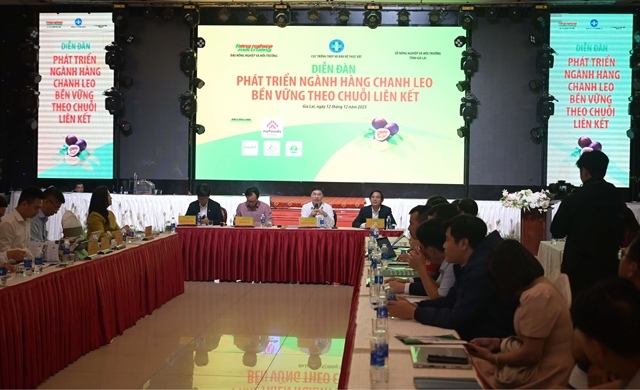Allowing raw material exports, MOIT yields to enterprises?
Allowing raw material exports, MOIT yields to enterprises?
The Ministry of Industry and Trade (MOI) has issued a series of documents, allowing some local enterprises exporting raw materials to help reduce the inventories.

The door for raw mineral exports has, once again, been opened, though not to all enterprises. With the nod given by MOIT, many enterprises in the provinces of Binh Thuan, Nghe An, Phu Tho, Lao Cai, Thua Thien – Hue and Quang Binh now can export raw minerals to clear the inventories.
The decision by the watchdog agency surprised many people, who just heard some months ago that Vietnam had decided to gradually stop the “raw mineral bleeding”, i.e. the raw mineral outflow from Vietnam.
Explaining its decision, the ministry said this is just a Band-Aid solution which exceptionally opens a way for enterprises to clear their inventories to ease their difficulties in the production and business.
The ministry affirmed that only the inventories would be exported, while enterprises must not exploit more minerals for export.
The problem with Vietnam’s minerals is that domestic enterprises cannot process minerals in Vietnam and they have to export minerals as raw materials for low prices. Therefore, export proves to be the only way for the exploited raw minerals.
MOIT would have to keep a strict control over the implementation of the decision to ensure that enterprises can only export the exploited minerals and that they do not make wrong declarations of the export volumes.
Some enterprises have sought the permission to export overly high amounts of raw minerals. The enterprises in Nghe An province, for example, have asked to give the permission to export 471,000 tons of iron ore and 200,000 tons of manganese.
In reply, MOIT said that the volumes of ores the enterprises plan to exploit are overly high--which are much higher than the mine reserves and the exploitation capacity written down in the exploitation licenses granted by the provincial authorities.
Therefore, MOIT has decided the enterprises can export 214,000 tons of iron ore and 120,000 tons of manganese, or just 50-60 percent of the volumes Nghe An wants.
Lao Cai province has got the permission to export 213,166 tons of iron ores and magenit, 29,500 tons of manganese-iron and 450,000 tons of apatite.
Some days ago, MOIT released a document on approving the Vietnam Coal and Mineral Industries Group (Vinacomin) to continue exporting coal dust No. 5 in the first and second quarter of 2013 to help the group ease difficulties and reduce the inventories.
According to the coal miner, by December 31, 2012, the group still had had ¼ million tons of unsold product.
In early 2012, the Prime Minister issued the Instruction No. 02 on strengthening the state management over the mineral exploration, exploitation, processing, use and export, stipulating that enterprises must not export lead, zinc ores and refined ores, manganese ores. The government only allowed exporting inventory ilmenit ores until June 2012.
Therefore, MOIT has been heavily criticized for its decision to open the border gate for raw mineral exports. The move has been described as an action of making compromise to enterprises. If the government does not take drastic measures to force enterprises to make heavier investment in mineral processing to stop exporting raw materials, MOIT may have to make many other similar decisions in the future.
vietnamnet

























